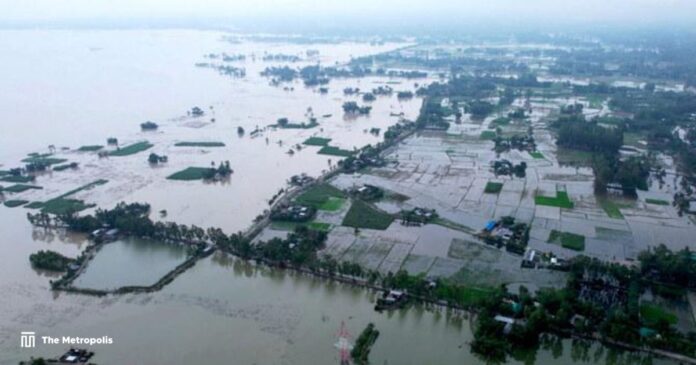Eight people have died as a result of this week’s floods in Bangladesh, which have affected over two million people after major rivers burst their banks due to torrential rains, authorities said on Saturday.
With hundreds of rivers crisscrossing the 170 million-person South Asian nation, floods have been more common in recent years. Rainfall patterns have changed due to climate change, and the Himalayan mountains’ glaciers are melting upstream.
The chief of police in Shahjadur, a small village in northern India, Sabuj Rana, said to AFP that two adolescent lads lost their lives when a boat overturned in floodwaters.
“The little boat held nine individuals. Seven made a safe swim. There were two lads who could not swim. They submerged,” he murmured.
According to Bishwadeb Roy, the chief of police in Kurigram, three more people perished in two different electrocution accidents after their boats got hooked in live electrical lines in floodwater.
Officials informed AFP earlier this week that three more people had perished in various flood-related situations across the nation.
The administration claimed to have sent food and support to severely affected districts in the country’s north as well as opened hundreds of shelters for those uprooted by the floods.
The floods have had an impact on over two million individuals. Kamrul Hasan, the secretary of the nation’s disaster management ministry, told AFP that 17 of the 64 districts in the country have been impacted.
Hasan stated that because the Brahmaputra, one of Bangladesh’s principal rivers, is flowing above danger levels in some places, the flood scenario could get worse in the north during the next several days.
Eight of the nine rural communities in the hardest-hit Kurigram area have been submerged under floodwater, according to local disaster and relief officer Abdul Hye, who spoke to AFP.
Here, flooding is a way of life. But the water level was really high this year. Brahmaputra surged six to eight feet (2–2.5 meters) in three days, according to Abdul Gafur, a district council member, who spoke to AFP.
Over 80% of the homes in my region have been submerged by floodwaters. Food, especially rice and edible oil, is what we are attempting to give. However, a drinking water crisis exists.
Currently, Bangladesh is experiencing its yearly summer monsoon, which provides 70–80% of South Asia’s yearly rainfall along with frequent flooding and landslide fatalities.
Although the amount of rainfall is unpredictable and varies greatly, experts believe that climate change is strengthening and increasing the irregularity of the monsoon.



